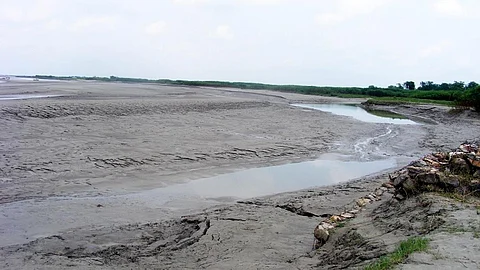
- Topics
- Feature
- Opportunities & Events
- Data
- Hindi Portal
- Topics
- Feature
- Opportunities & Events
- Data
- Hindi Portal

The first discussion was on June 4 2011, in which Rama Rauta and K C Sivaramakrishnan shared their experiences of working with the government and people’s organisations to save the Ganga.
The utility, aesthetic and religious value of the natural ecology of the Ganga and of the Himalayas is invaluable. The Ganga is the life-line of crores of our people. A naturally flowing fresh and clean Ganga freely and permanently meets the various water requirements of people on its banks, recharges the groundwater all along its flow, improves the fertility of a lot of farmland through its silt, and provides the habitat for hundreds of diverse life forms, etc.
The dense natural forests of the Himalayas prevent floods, constitute the natural store house of invaluable water and natural manure, provide the habitat for the invaluable Himalayan diverse life forms, provide seasonal fruits, nuts, edible oil seeds, honey through its flowering trees, medicines through its medicinal plants, and fuel, timber, fiber for local use. They also freely contribute to the fertility of the agro-ecosystems of the entire Gangetic plains depositing fresh nutrient-rich silt through freely flowing rivers. The speakers therefore noted that we must not allow our development activities to deprive the masses of the various invaluable services they have been getting freely from the natural ecology of the Ganga and of the Himalayas for ages.
The wisdom that was
The third lecture in the series was on the river systems of Bihar, specifically the rivers Kosi and Bagmati. Embankments along this river system have resulted in breaching and consequent flooding and silting, forcing a rethink of this strategy. The presentation by Dr. Dinesh Kumar Mishra reflected the complexity that is India, both as a country and a culture. While on the one hand sages and poets of yore, such as Ved Vyas and Kalidasa, have given us an understanding of rivers and their importance in sustaining civilisations, on the other hand we are confronted by a severe crisis based on misuse and lack of understanding. The question that arises is, should we not then move back towards traditional ideas of preservation and conservation?
Mishra spoke of the river systems of Bihar, chief among which are the Kosi and Bagmati. He acknowledged the contribution of ancient sages, epic writers and poets such as Ved Vyas, Kalidasa, Bhartihari towards an understanding of the importance of rivers in sustaining civilizations. This same wisdom is often displayed by local people, he felt. "I met a primary school teacher (in Khagaria district)", Mishra said, "who asked me: Have you not read Pascal’s law"? What the teacher was asking Mishra was why the waters of the river Bagmati were forced to meet the Kosi, even though the latter flowed at a higher level. To do this, the level of the Bagmati river had to be raised, and the consequence of this intervention was flooding and silting of the right bank of the Bagmati.
Mishra pointed out that a perennial planning feature encountered all along the river systems of Bihar is the embankments built on them. As a result, starting from 1963, the Kosi has been regularly breaching its embankments. In 2008 when an upper embankment was breached in Kusaha in Nepal, it resulted in widespread devastation in the plains of Bihar.
Minister Dr. K.L. Rao said in Parliament in 1967 that it was on account of the peculiar nature of the Kosi that the government had taken up the Kosi Project (of building embankments). However, in 1954, after a visit to China the same Dr. K.L. Rao diluted the whole embankment debate.
Mishra concluded his lecture by advising caution while trying to control and tamper with natural features.
The lectures in the series can be viewed here:
India Water Portal is grateful to Prof. Ramaswamy Iyer and the India International Centre for allowing it to record the lecture and share the videos online.